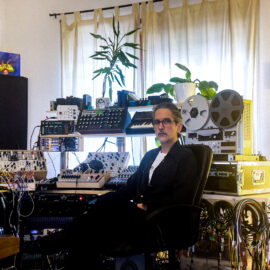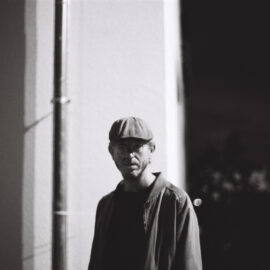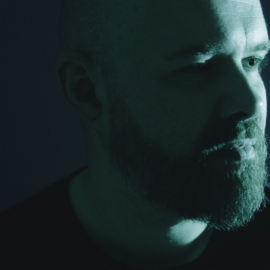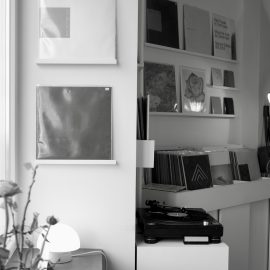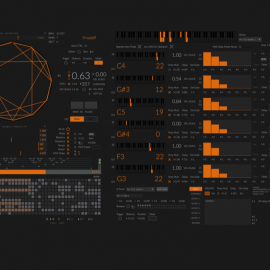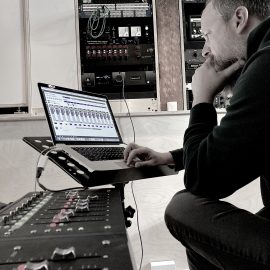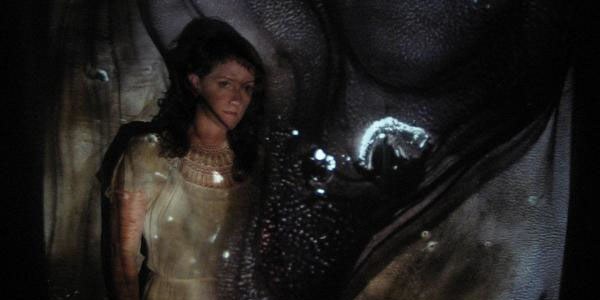
Since you’re also a video artist, do you have a particular piece which accompanies Nest of Iterations? Is it possible for you to tell us in words a bit about it?
I am currently developing a live cinema performance that will contain pieces from Nest of Iterations. For me it is a natural progression, there are such strong images, emotions, and scenes embedded in my music. These develop as I am in the process of composing, as if I am creating a soundtrack to a film that does not exist yet. I want to see these notions materialize, but it is also really important that there is still room for interpretation on the part of the viewer. I enjoy the challenge of evoking particular sensations with subtlety. I approach my visual work very much in the same way I approach composing music, the challenge is to bring the two together without the visual element overpowering the music. I am conscientiously working to negotiate a balance between the two, while maintaining their interrelatedness.
Although your music is minimal, there are a lot of complexities behind the scenes. Describe your composition process.
My work is definitely influenced by the early school of minimalism, in fact my choice to attend Mills College for graduate study was made in part by the fact that both Terry Riley and Steve Reich were a part of the history there. The experimental, and electronic tradition at Mills is incredibly rich, and has been formed by many significant 20th century composers, but I digress. Riley and Reich resonated with me in particular because of their use of tape loops as a compositional tool. Variation within repetition, or sustain is the common thread of the genre. On the surface it appears that there is little change, while the complexity is occurring in the details of elements of tone, texture, rhythm, etc. moving in a shifting relationships with one another.
It seems that at some point, that for many people minimal became synonymous with simple. The trick is to take a simple idea, and either through chance, process, or careful sculpting, create a situation where complexities occur. I think this creates a space where the listener can move through the layers by shifting their attention from macro to micro levels, as they choose. This is the approach that I have extracted from minimalism. But I tend to develop pieces from the micro level up, meaning that it is usually a tone (or combination thereof), timbre, or texture that catches my ear and becomes the foundation on which the piece is built. From there I build the layers by overlapping repetitive phrases, introducing evolving processes to slivers, phrases, sections, and entire tracks. Some of this processing is carefully carved, while others are determined by mapping generative instruments with scaled parameters. I repeat this process until I am content with the movement, feel, and immersive quality of the piece.
What in the world is Interdisciplinary Computing and how do you think you apply that knowledge in your music?
This was a concept I was unfamiliar with until I decided to attend UCSD, where I received my bachelor’s degree. To paraphrase the description given by the school, the title of the program, Interdisciplinary Computing and the Arts, describes a field of study that bridges ideas from computer science to art and cultural theory. I wont go into details on the curriculum, for that you can check out the website: http://music.ucsd.edu/ugrad/icam.php. But in terms of my personal sound practice the program provided me with enough fundamental knowledge to feel comfortable creating my own tools in programs such as Max/MSP/Jitter, or to be able to adapt to and effectively use just about any piece of software or hardware for the purpose of recording, generating, and/or manipulating sound.
At which point do you think the digital structures that we create will eventually evolve into organic forms?
Hmm, this is a tricky question, that can be answered in endless ways depending on how you define an organic form. But at this moment I would say that digital structures have already evolved into organic forms, because humans have constructed, adapted, and integrated digital technology in such a way that they are both an integral and uniquely identifiable component of the living system that is existence. Not to mention that many of these digital technologies have been modeled after natural forms and phenomenon, i.e. emergent structures and systems. I’m probably too uniformed on the topic to make a convincing argument though, I think the question could easily be the topic of a dissertation!
What’s it like being one of a few female electronic experimental artists?
Personally, I identify myself as human first, woman second. I am primarily interested in connecting on shared ideas and passion, so similarities or differences such as gender, race, or religion become secondary. In terms of creative decisions, I think is it a personal choice whether or not to make these things a focal point. For the time being I choose not to. From the perspective of audience or observer, I choose to focus on the integrity of the work, not the specifics of the circumstance, tools, or people who created it. I think gender, and other traits, only become an issue when they are used to weigh the value of someone’s work, rather than letting the work speak for itself.
